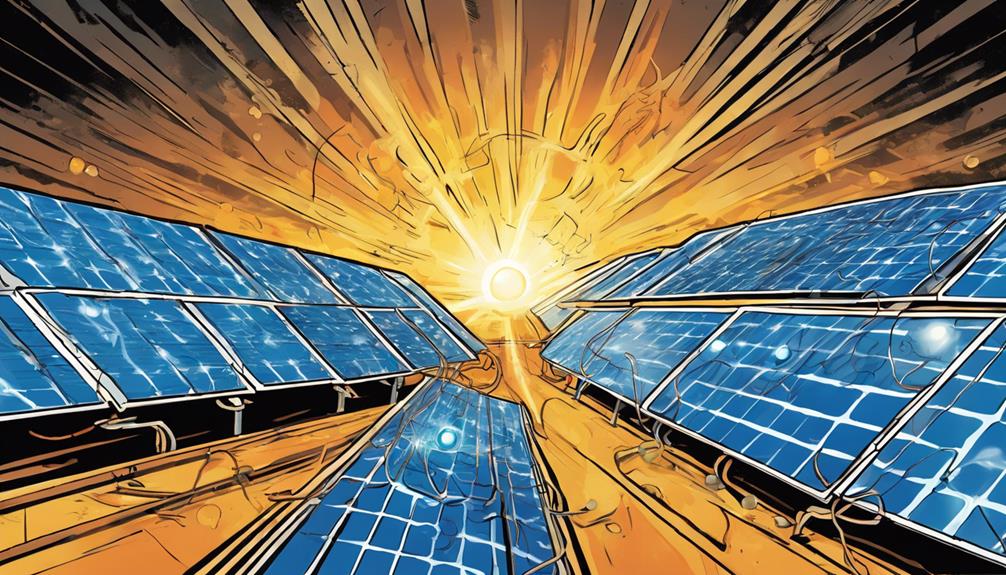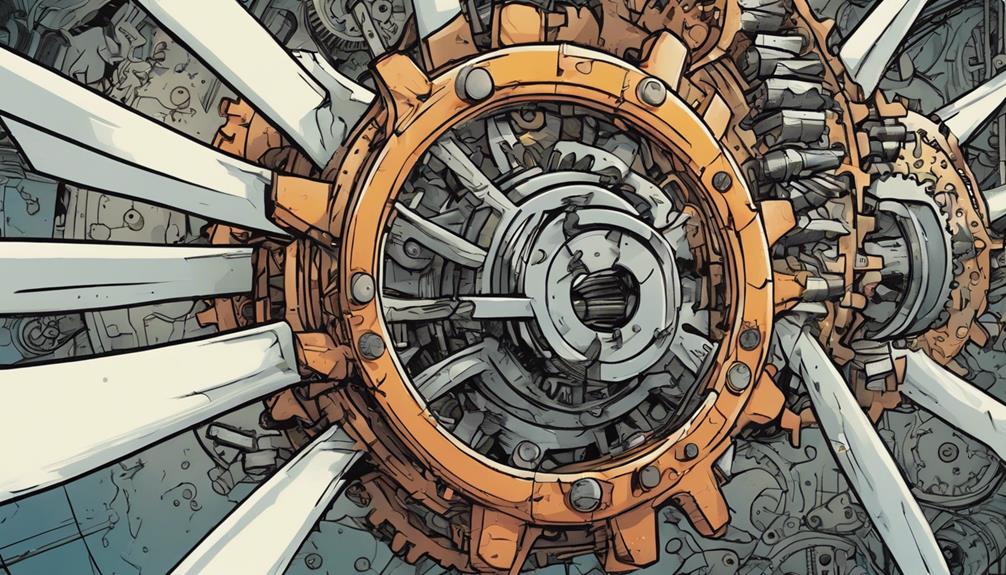Solar panels work by absorbing sunlight with photovoltaic cells, which then release electrons to create an electric current, transforming sunlight into electricity efficiently. This process allows you to harness solar energy in a sustainable and innovative way, powering your home or business with clean electricity. If you're curious about the specific mechanisms behind this fascinating energy conversion process, there are more insights waiting for you to explore.
Key Takeaways
- Photovoltaic cells in solar panels absorb sunlight.
- Absorbed photons release electrons, creating an electric current.
- Direct current (DC) is converted to alternating current (AC) by inverters.
- Solar panels capture sunlight efficiently on rooftops or in solar farms.
- Electricity is generated from sunlight through the photovoltaic effect in cells.
Solar Energy Basics
Solar energy basics involve understanding how solar panels convert sunlight into electricity efficiently. Solar panels, also known as photovoltaic panels, harness the energy from the sun through photovoltaic cells. These cells absorb photons from sunlight, which in turn release electrons, creating an electric current.
This direct current (DC) electricity produced by the solar panels is then converted into alternating current (AC) by inverters, making it suitable for household use.
The installation of solar panels can vary, from rooftops to large solar farms, all designed to capture sunlight efficiently. By utilizing solar energy, individuals and communities can reduce their reliance on non-renewable energy sources, ultimately leading to a decrease in carbon emissions.
Embracing solar energy not only helps in creating a more sustainable environment but also contributes to the overall goal of shifting towards cleaner energy alternatives.
Photovoltaic Cell Functionality

Efficiently functioning as the core components of solar panels, photovoltaic cells play an essential role in converting sunlight into electricity through a process known as the photovoltaic effect. These cells are typically constructed using semiconductor materials like silicon, which have the unique property of releasing electrons when exposed to sunlight.
Here's how photovoltaic cells work:
- Absorption of Sunlight: Solar cells absorb sunlight, which is composed of photons carrying energy.
- Generation of Electron-Hole Pairs: When photons strike the semiconductor material, they generate electron-hole pairs by exciting electrons to a higher energy state.
- Electric Current Formation: The movement of these electron-hole pairs creates an electric current within the cell.
- Electricity Generation: This electric current can then be captured and converted into usable electricity to power various devices, contributing to sustainable energy generation.
Solar panels consist of interconnected photovoltaic cells that collectively harness sunlight to generate electricity effectively. The advancements in solar cell technology have notably increased their efficiency, making solar energy a more viable and accessible source for electricity generation.
Solar-Thermal Power Systems
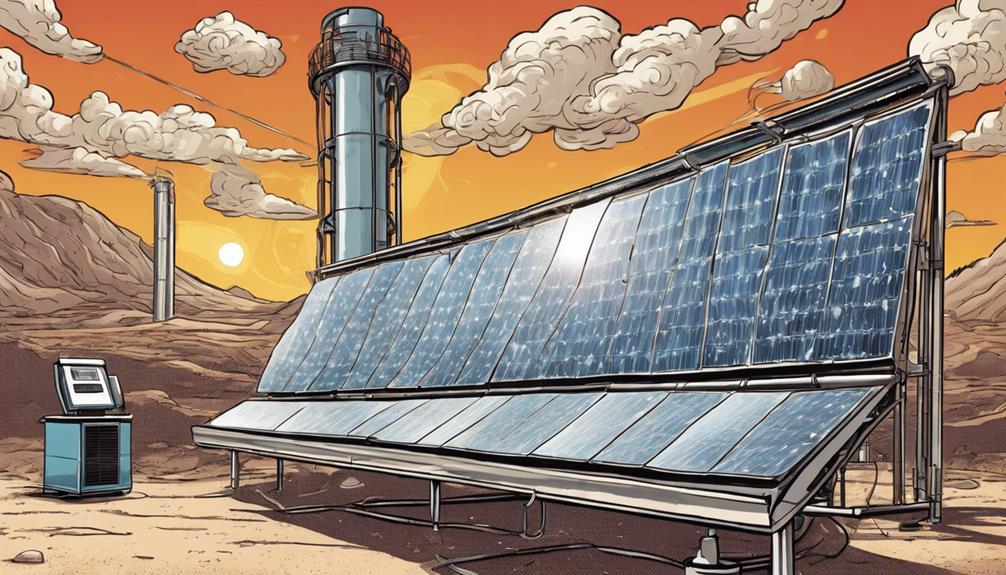
You can learn about how solar-thermal power systems harness the sun's energy by using mirrors to concentrate sunlight onto receivers. These systems efficiently convert solar energy into heat, which can be further utilized to generate electricity through steam turbines or stored for future use.
Solar-thermal power systems, such as Power Tower and Linear Concentrator systems, are widely employed in large-scale power plants for sustainable electricity production.
Mirror Concentration Technology
Mirror concentration technology in solar-thermal power systems utilizes mirrors to focus sunlight onto receivers, creating high-temperature heat for electricity generation.
Here's how this process works:
- Mirrors Concentrate Sunlight: The mirrors in solar-thermal power systems track the sun and reflect sunlight onto receivers with precision, ensuring maximum concentration of solar energy.
- Receivers Collect Solar Energy: The receivers in these systems are designed to efficiently absorb and convert the concentrated sunlight into high-temperature heat.
- Heat Generation for Electricity: The high-temperature heat generated by the receivers is then used to produce steam, which drives turbines to generate electricity.
- Large-Scale Power Plants: Concentrating solar-thermal power systems, such as Power Tower and Linear Concentrator designs, are employed in large-scale power plants to harness solar energy effectively.
Solar-thermal power systems offer a sustainable and efficient method of utilizing concentrated sunlight to produce electricity, contributing to the renewable energy landscape.
Solar Heat Conversion
Solar-thermal power systems harness sunlight to generate electricity through the concentration of solar energy onto receivers that produce heat. Mirrors are used to focus sunlight onto these receivers, where the concentrated solar energy is used to generate heat.
This heat can then be used to produce steam or heat a transfer fluid, which in turn drives a turbine to generate electricity from solar power. These systems are commonly found in large-scale power plants dedicated to producing electricity from solar energy.
One advantage of solar-thermal power systems is their ability to store excess heat for later use, making them more reliable compared to some other solar technologies. With efficiencies that can surpass 40%, solar-thermal power systems are a viable option for utility-scale electricity generation, offering a sustainable and efficient way to harness the power of the sun.
Systems Integration for Solar
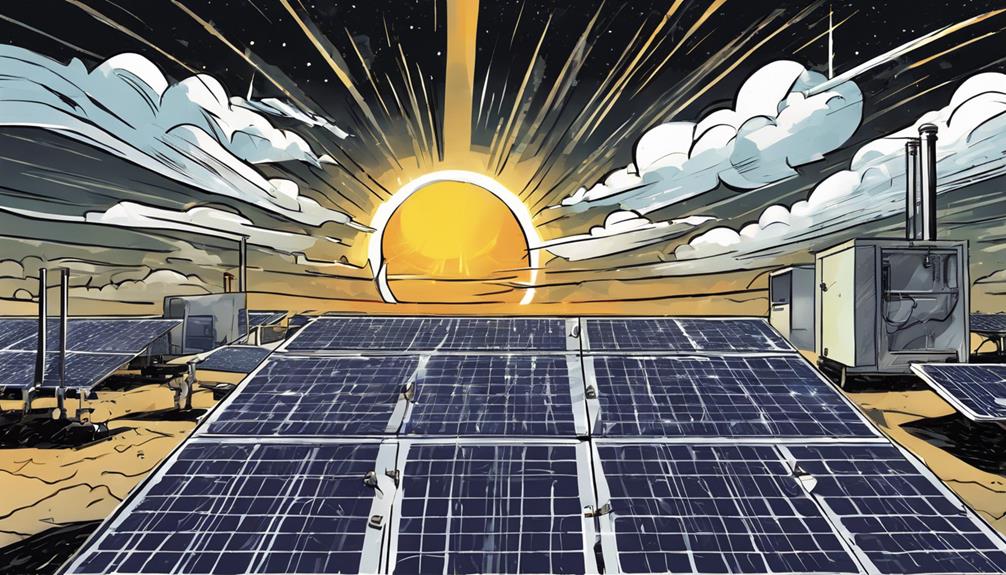
You need to understand the importance of grid integration solutions for solar energy systems.
By combining renewable energy sources effectively, you can meet the increasing energy demands sustainably.
Inverters and grid services are key components in ensuring the successful integration of solar energy into existing electrical grids.
Grid Integration Solutions
Efficient grid integration solutions are essential for ensuring the seamless connection and operation of solar energy systems within existing electrical grids.
When it comes to solar systems integration, the following key points are necessary:
- Inverters: These devices are essential for converting the direct current (DC) electricity produced by solar panels into the alternating current (AC) electricity needed for the grid.
- Grid Services: Solar energy systems offer grid services that help in balancing electricity supply and demand, enhancing grid stability and reliability.
- Variability Management: Managing the variability of solar energy production is critical for integrating it effectively with other renewable energy sources within the grid.
- Maximizing Benefits: Efficient solar energy and storage integration are crucial for maximizing the advantages of solar power, facilitating a smooth progression to renewable energy sources.
Renewable Energy Integration
Integrating renewable energy sources like solar power into existing electrical grids requires strategic coordination with other sustainable sources such as wind and hydroelectric power. This renewable energy integration is essential for maximizing the efficiency and reliability of the electrical grid while reducing dependence on fossil fuels.
Inverters play a pivotal role in this process by converting the DC electricity generated by solar panels into the AC electricity that powers homes and businesses.
Efficient solar power generation and integration into electrical grids help maintain grid stability and reliability. By combining solar energy with storage solutions, such as batteries, grid operators can store excess energy produced during the day for use during peak demand periods or when sunlight isn't available.
This integration not only optimizes the utilization of solar power but also minimizes the reliance on non-renewable energy sources, contributing to a more sustainable and environmentally friendly energy system.
Soft Costs Impact Analysis
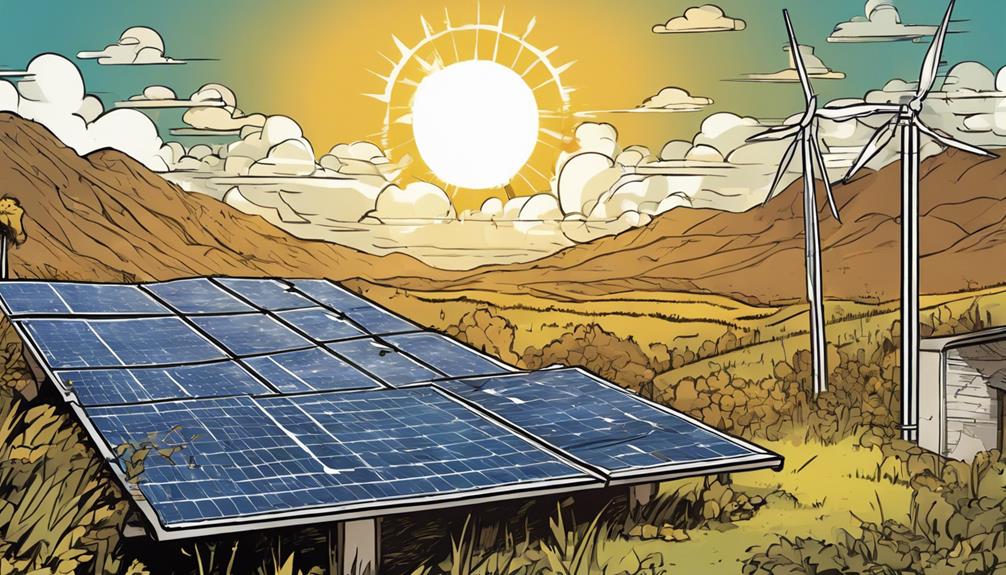
When analyzing the impact of soft costs in the solar industry, it becomes evident that these expenses play a significant role in determining the overall affordability of solar energy systems. Soft costs encompass various expenses such as permitting, financing, and installation, which can greatly influence the total cost of implementing solar projects.
Here are some key points to keep in mind:
- Rooftop Solar Systems: Soft costs tend to be higher for rooftop solar installations due to the need for customized designs and individualized installations.
- Community Solar Projects: These initiatives aim to reduce soft costs by allowing multiple consumers to benefit from a shared solar array, thereby spreading out the expenses.
- Cost Variations: Solar companies face differing soft costs based on the complexity and scale of the solar project, impacting the overall affordability for consumers.
- Importance of Efficiency: Efficient management of soft costs is essential for making solar energy more accessible and cost-effective for a broader range of consumers.
Solar Power Generation Mechanism
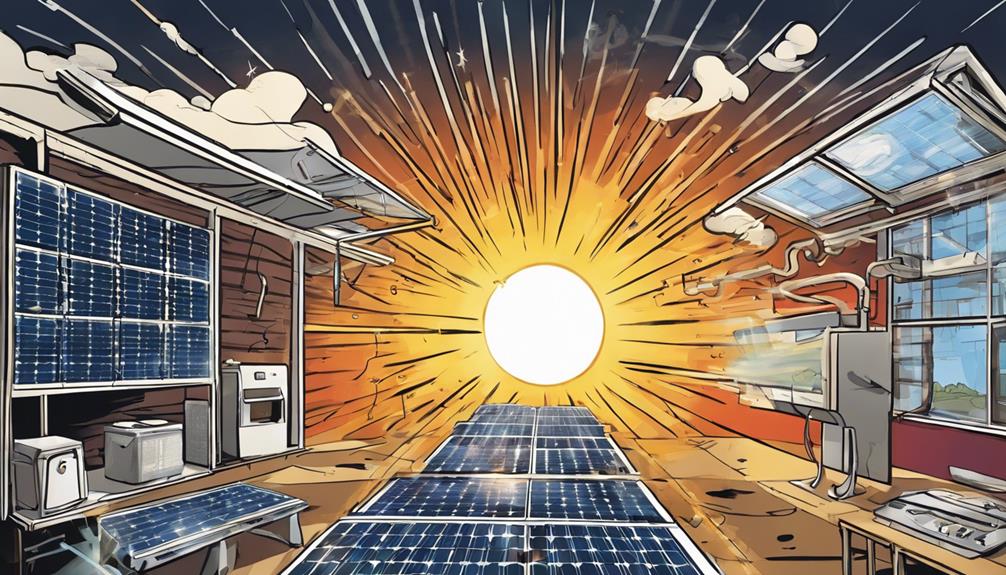
You'll learn about how solar panels convert sunlight into electricity using photovoltaic cells and the photovoltaic effect.
As sunlight hits the panels, the semiconductor material absorbs photons, releasing electrons to create an electric current.
This process enables the generation of clean and renewable electricity from the sun's energy resources.
Conversion of Sunlight
Solar panels efficiently harness sunlight through photovoltaic cells, converting it into electricity via the photoelectric effect. When sunlight reaches the solar panels, the photons dislodge electrons from atoms within the semiconductor material. This process initiates the flow of electrons, generating an electric current.
Here's how the conversion of sunlight into electricity occurs:
- Photon Absorption: Photovoltaic cells absorb photons from sunlight, providing the energy needed to start the electricity generation process.
- Electron Movement: The absorbed photons knock electrons loose, allowing them to move freely through the material.
- Electric Current Formation: The movement of these electrons creates an electric current that can be utilized as electricity.
- Conversion to Alternating Current: An inverter then converts this direct current (DC) into alternating current (AC), suitable for powering household appliances and devices.
Through this efficient process, solar panels produce electricity, offering a sustainable and environmentally friendly energy source for various applications.
Electrical Charge Generation
To understand the process behind solar power generation, you must grasp how photovoltaic cells convert sunlight into electrical energy.
Solar panels utilize photovoltaic cells to absorb sunlight, initiating the generation of an electric charge. When sunlight strikes the solar panel, it energizes electrons within the cells, leading to the creation of an electrical current.
This electric current is then captured by the wiring present within the solar panels. The captured direct current (DC) electricity undergoes conversion to alternating current (AC) through the use of an inverter, making it suitable for household consumption.
The phenomenon of sunlight being converted into electricity by solar panels is known as the photovoltaic effect. Through this intricate process, solar panels efficiently harness the power of the sun to produce usable electricity for a variety of applications.
Energy Production Process
By harnessing the photovoltaic effect, solar panels efficiently convert sunlight into electricity, providing a sustainable energy production process known as the solar power generation mechanism.
Here's how the energy production process works:
- Solar cells within photovoltaic (PV) panels absorb photons from sunlight.
- The absorbed photons cause the release of electrons, creating an electric current in the form of direct current (DC).
- An inverter then converts the DC electricity into usable alternating current (AC) electricity for powering household appliances.
- This efficient process of capturing sunlight and converting it into electricity makes solar power a popular choice for renewable energy generation.
Solar panels with silicon cells play a crucial role in transforming sunlight into usable electricity, offering a clean and environmentally friendly energy source for various applications.
The ability to efficiently convert sunlight into electricity underscores the importance of solar power in the shift towards sustainable energy solutions.
Solar Panel Technology Comparison
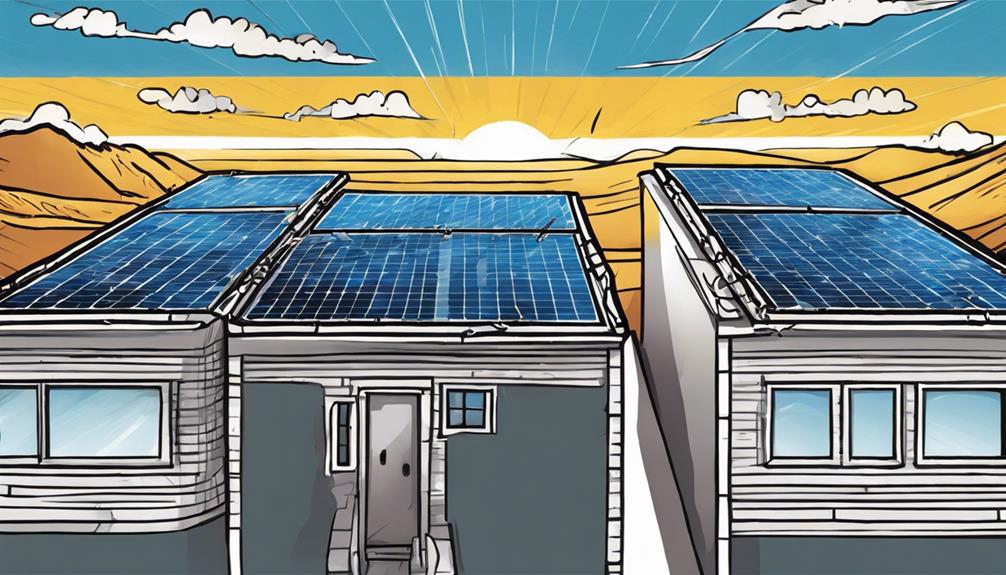
When comparing solar panel technologies, consider the efficiency and functionality of each type for specific energy conversion purposes.
Solar panels harness sunlight to generate electricity, with two main types of technologies: photovoltaic panels and solar thermal panels.
Photovoltaic technology, using semiconductor materials like silicon, directly converts sunlight into electricity through the photovoltaic effect. These panels are mainly used for electricity generation.
On the other hand, solar thermal panels utilize sunlight to heat water or fluids for various applications, focusing on producing heat rather than electricity.
The choice between these technologies depends on the desired outcome, whether it be electricity generation or heat production.
Understanding the distinctions between these solar panel technologies is vital for selecting the most suitable option based on specific energy conversion needs.
Solar Farm Operations Overview
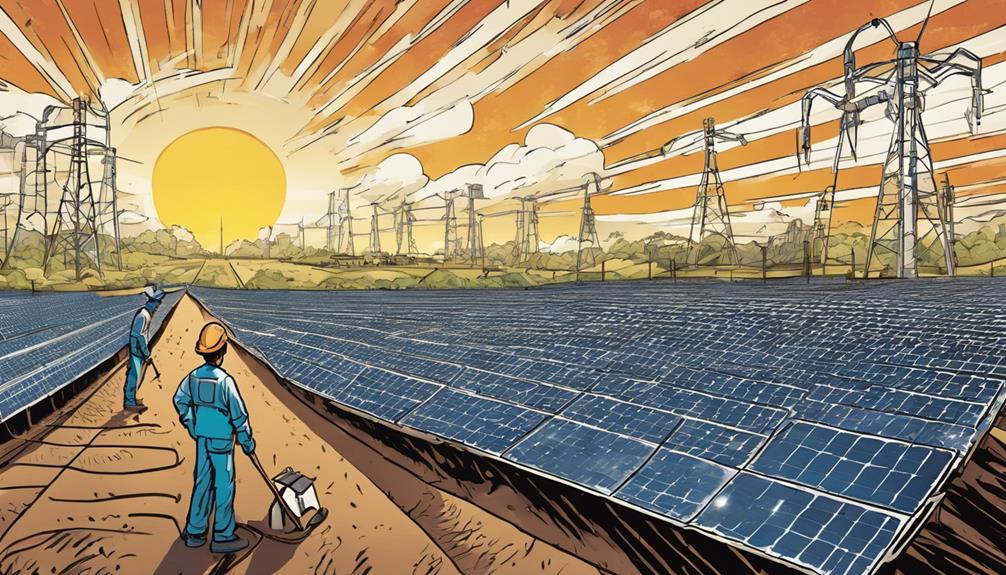
Solar farms operate as large-scale installations of interconnected solar panels specifically designed for commercial energy generation. These photovoltaic (PV) panels harness energy from the sun to generate electricity on a substantial scale.
Here's an overview of how solar farm operations work:
- Direct Contribution to the Power Grid: Solar farms play a crucial role in directly feeding the electricity they produce into the power grid for distribution to homes and businesses.
- Renewable Energy Expansion: By generating electricity from sunlight, solar farms markedly contribute to expanding renewable energy capacity and reducing dependence on fossil fuels.
- Sustainability and Environmental Impact: Solar farms are an eco-friendly and sustainable solution for meeting energy needs while also assisting in the fight against climate change.
- Commercial Energy Generation: These installations are specifically tailored for commercial purposes, ensuring efficient and reliable electricity production for a wide range of consumers.
Solar farms are instrumental in driving the shift towards cleaner energy sources and promoting a greener future for all.
Solar Energy Efficiency Insights
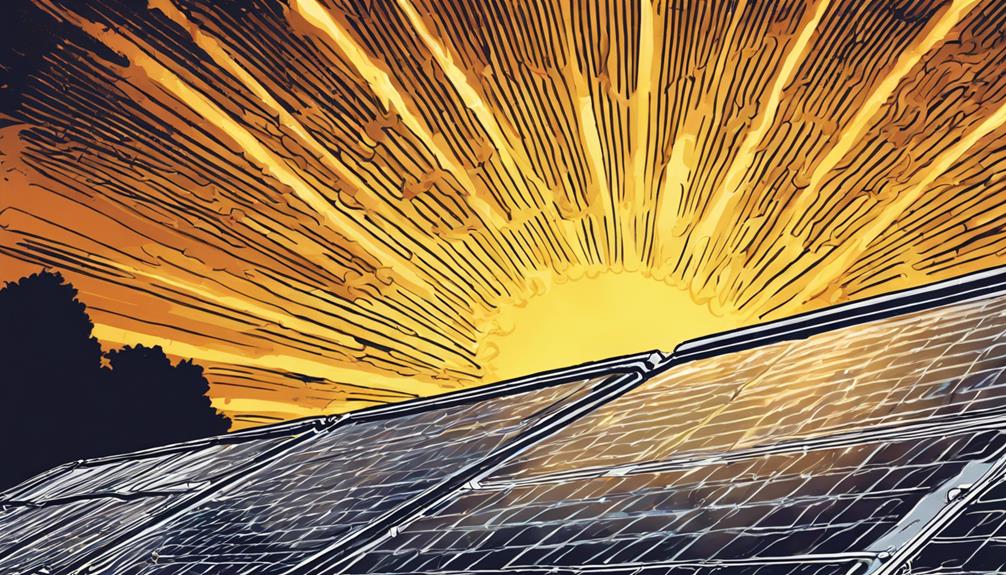
To comprehend solar energy efficiency insights, consider the factors influencing the performance of solar panels. Solar panels typically operate at an efficiency rate ranging from 15-22%, with more advanced panels achieving up to 25% efficiency.
The efficiency of solar panels is heavily impacted by variables such as sunlight intensity, panel orientation, temperature, and shading. Opting for high-efficiency solar panels can greatly enhance energy production, making them a popular choice for both residential and commercial installations.
Technological advancements in solar panel design, like PERC (Passivated Emitter Rear Cell) and bifacial panels, have played a pivotal role in boosting efficiency and overall energy output. It's crucial to monitor energy production continuously and optimize panel placement to further enhance the efficiency and performance of solar energy systems.
Solar Panel Cost Considerations
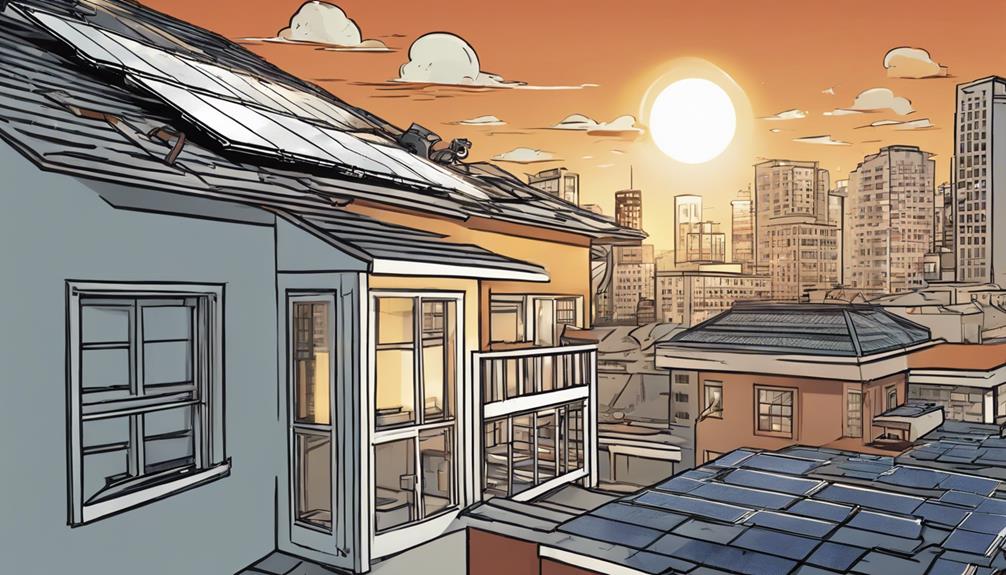
Considering various factors such as system size, panel quality, installation complexity, and location, the cost of solar panels for residential use typically ranges from $10,000 to $30,000.
When evaluating solar panel cost considerations, keep these points in mind:
- System Size: Larger systems generally cost more upfront but can lead to greater long-term savings on electricity bills.
- Panel Quality: Higher quality panels may come with a higher price tag initially but often offer better efficiency and durability, ensuring a more reliable electricity generation over the system's lifespan.
- Installation Complexity: Complex installations, such as those requiring specialized mounting or wiring, can increase overall costs. However, these complexities are often necessary to optimize energy production.
- Location: The geographical location of your home can affect installation costs due to factors like roof orientation, shading, and local regulations impacting the ease of installation.
Understanding these cost considerations can help you make informed decisions when investing in solar panels for your home.
Frequently Asked Questions
How Do Solar Panels Generate Electricity From Sunlight?
You wonder how solar panels work. When sunlight hits them, photons free electrons in silicon cells, creating an electric current. This current is captured by wiring, converted to AC electricity, and powers your appliances, even on cloudy days.
Do Solar Panels Convert Light to Electricity?
Solar panels do convert light to electricity efficiently. Did you know that solar power is the fastest-growing source of new energy worldwide? It's amazing how sunlight can be harnessed to power your home!
How to Convert Solar Panel to Electricity?
To convert solar panels to electricity, position them to capture sunlight. Photons activate the panels, generating electrons. These electrons flow, creating direct current (DC) within the panel. An inverter converts this to alternating current (AC) for use at home.
How Efficient Are Solar Panels at Converting Sunlight to Electricity?
Solar panels can efficiently convert sunlight to electricity. Did you know that high-quality panels can achieve up to 24% efficiency? That's impressive! Monocrystalline types often lead in efficiency, while thin-film panels offer flexibility and lightness.
Conclusion
Just like the sun's rays are transformed into electricity by solar panels, you have the power to harness your own potential and shine bright in whatever you do.
Keep learning, growing, and adapting to maximize your efficiency and impact. Embrace the energy of the sun and make a difference in the world around you.
The possibilities are as endless as the solar power itself. Keep shining!
